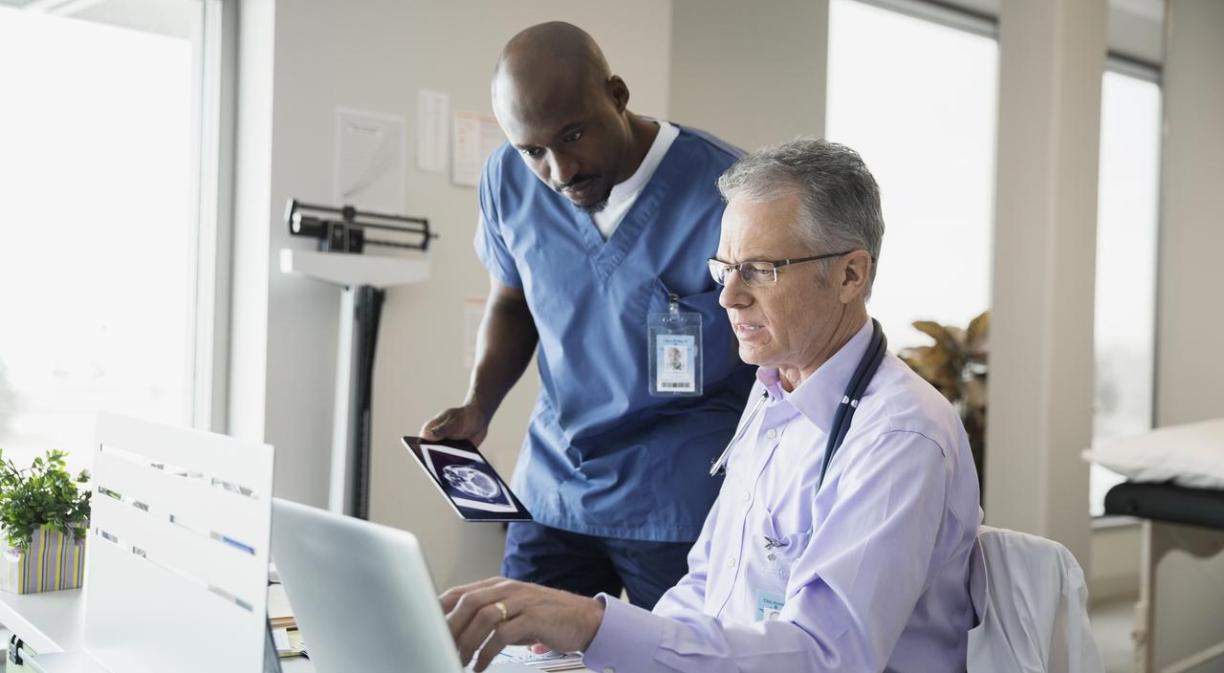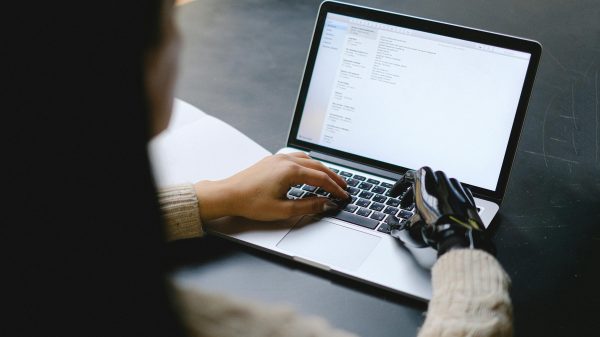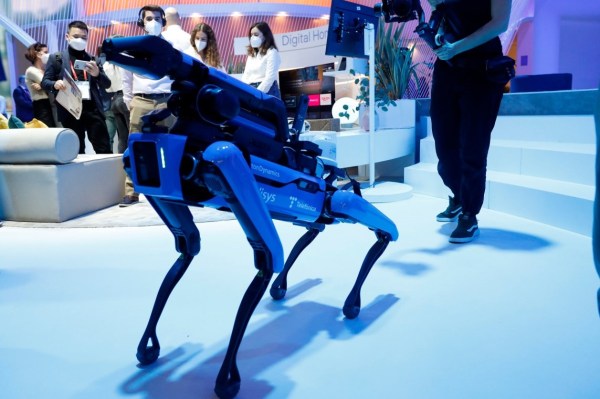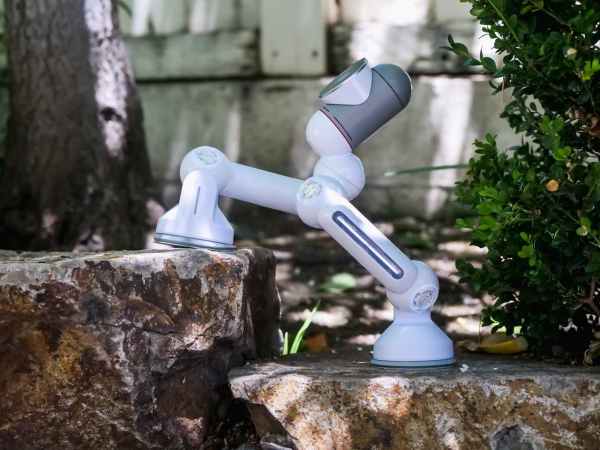There are many examples that could be given to demonstrate the benefits of technology and Artificial Intelligence in supporting the rehabilitation of people who have health issues.
Cycling in the ICU
To start with, there is the project being carried out in the intensive care unit (ICU) of the Hospital del Mar in Barcelona, where people admitted to hospital can start their recovery by ‘taking a ride’ on a bicycle without actually leaving their bed, in a process that combines physical exercise and virtual reality.
This idea consists of an ergometric bicycle that allows bedridden patients to do physical activity similar to cycling, combined with virtual reality to start their rehabilitation process in an “early and enjoyable” manner.
The system allows the patient to pedal even when lying in bed and adapts to their physical capacity, even having the capacity to have them move their legs passively and thus mobilising the muscles when the patient does not yet have the capacity to do so themselves.
In addition, the bicycle is combined with a 360-degree reality glasses system, which allows patients to feel as if they were actually cycling through different areas of the city of Barcelona.
To do this, they work with the Barcelona-based company Realitytelling, which produces the video capsules that patients watch while they exercise, making it necessary to synchronise the video with the rhythm of pedalling to make the experience more satisfactory.
Improvement in the face of Parkinson’s
New technologies are also helping to alleviate as far as possible the effects of degenerative diseases such as Alzheimer’s, Parkinson’s or others, such as Amyotrophic Lateral Sclerosis (ALS).
In the case of Parkinson’s disease, work is under way on a new brain stimulation treatment that could improve quality of life and help control symptoms in people with advanced cases of Parkinson’s.
Research, conducted by the University of Florida in conjunction with fourteen medical centres, tested the effectiveness and safety of a device that helps improve symptoms through deep brain stimulation (DBS).
The device aims to reduce tremors, improve the slowness of movement, reduce motor disability and involuntary movements related to the disease and the drugs used to treat it.
To do this, the system works through small electrodes implanted in the brain connected to the device which is programmed to emit a mild electrical current.
Children with hemiparesis
Artificial Intelligence takes centre stage in a European project involving researchers from the University of Castilla-La Mancha (UCLM), through the Faculty of Physiotherapy and Nursing, for use in the functional diagnosis of children with hemiparesis (paralysis on one side of the body) and also the construction of home rehabilitation systems (telerehabilitation).
This is the European project AInCP (Artificial Intelligence in Cerebral Palsy), led by the Italian University of Pisa, which will clinically validate new Artificial Intelligence algorithms to develop clinical tools that support evidence-based decisions in the functional diagnosis of children with hemiparesis and create rehabilitation systems that they can access at home.
Social robotics versus ASD
Several Spanish universities are collaborating on a project in which they seek to improve the behaviour and response of children with autism spectrum disorders (ASD) by means of social robots.
This multidisciplinary work involves experts in paediatrics, biomedical engineering, robotics and neurorehabilitation to try to offer personalised solutions and support systems to professionals working in this field.
To this end, work is being done with aspects associated with biomedical engineering such as advanced sensors for physiological signals, artificial intelligence techniques and new human-like robots capable of teaching these children the meaning of different expressions and emotions, in what could be called personalised rehabilitation.
This technique is based on the application of knowledge acquired in the field of electrodermal activity sensors and heart rate variability or cameras for the detection of gestures and emotions in faces.
Walking again
One of the cases that first comes to mind when we think of how technology can help in the arduous path of patient rehabilitation, whether due to an illness or an accident, is that of those who are unable to move due to a spinal cord injury.
Last February, the journal Nature Medicine reported the results of a Swiss team of researchers, part of an ongoing clinical trial, in which three people who had suffered a complete spinal cord injury and were paraplegic are now able to walk.
All this is possible thanks to an implant that stimulates the area of the spinal cord that controls the muscles of the trunk and legs, which works from an application that incorporates artificial intelligence.
These soft implants were placed under the vertebrae in contact with the spinal cord and “are capable of modulating the neurons that regulate the activity of precise muscle groups,” says neuroscientist Grégoire Courtine of the Ecole Polytechnique Fédérale de Lausanne (EPFL).
Just like the brain
In this way, he adds, the spinal cord can be activated as the brain would naturally do for standing, walking, cycling or swimming.
The researchers combined this technology with “a personalised computational framework” to position the electrode palette to the needs of each patient, and thus personalise the activity stimulation programmes.
To better illustrate this process, we refer to one of the patients who received this technique, Michel Roccati, an Italian who four years ago had a motorbike accident and became completely paraplegic. Michel can now get up and walk using a walker in which two small remote controls are inserted.
A tablet sends the stimulation commands to a pacemaker in Michel’s abdomen, from which the stimuli are transmitted to the spinal implant to make Michel stand up.
The way the system works means that with a press of the button on the right side of his walker plus his willingness to activate his muscles, his left leg flexes and then positions a few centimetres further forward. When the left button is activated, the right leg takes a step in turn and starts to walk.
This system has also enabled him to go up and down stairs.
Bionic chip in the eye
Another example of technology taking a decisive role in the people’s rehabilitation is the use of a bionic chip to enable an 88-year-old British woman who had lost the sight in her left eye to detect signals in that eye again.
The patient, a mother of seven and grandmother of eight, suffers from geographic atrophy, the most common form of age-related macular degeneration (AMD), a disease affecting more than five million people worldwide.
The operation, performed at London’s specialist Moorfields Eye Hospital, involved the surgical insertion of a two-millimetre microchip into the centre of the patient’s retina. The patient had to wear special glasses containing a video camera linked to a small computer, which in turn was attached to a waist band.
The chip captures the image provided by the glasses and transmits it to the computer, which uses artificial intelligence algorithms to process the information and guide the focus of the glasses.
Finally, the glasses project this image as an infra-red beam through the eye to the chip, which transforms it into an electrical signal that travels back through the cells of the retina to the brain. The latter, in turn, interprets this signal as if it were natural vision.
Just as we have been seeing during the COVID-19 pandemic all that technological tools and Artificial Intelligence are doing in health, their use in the field of patient rehabilitation is also meaning a step forward in improving people’s living conditions.







